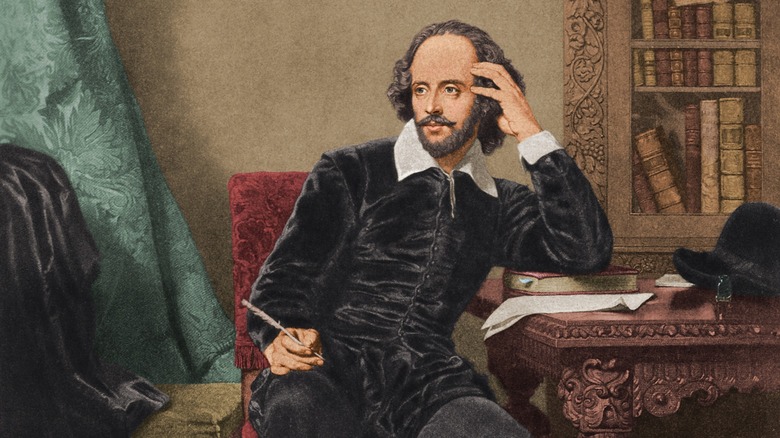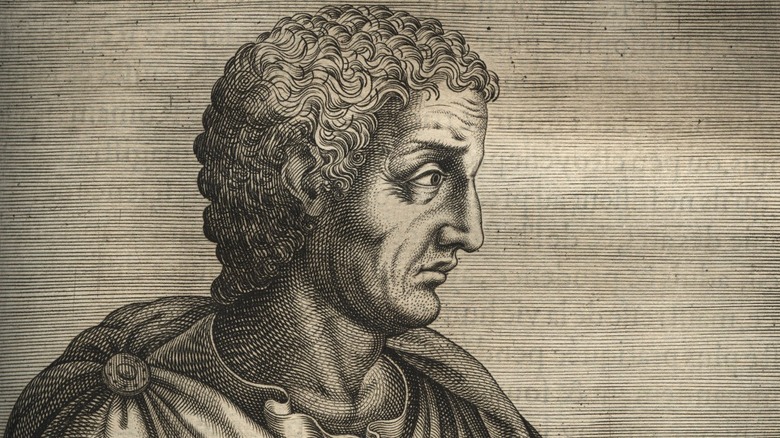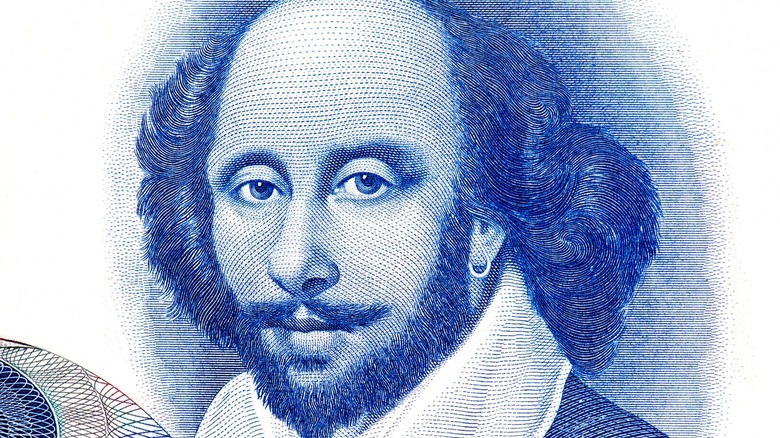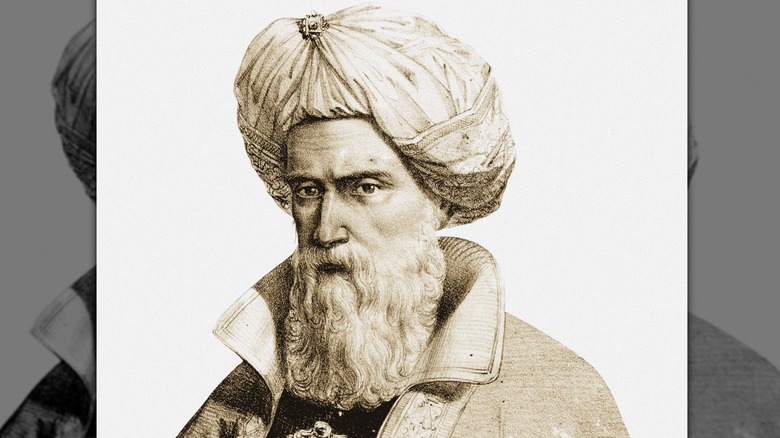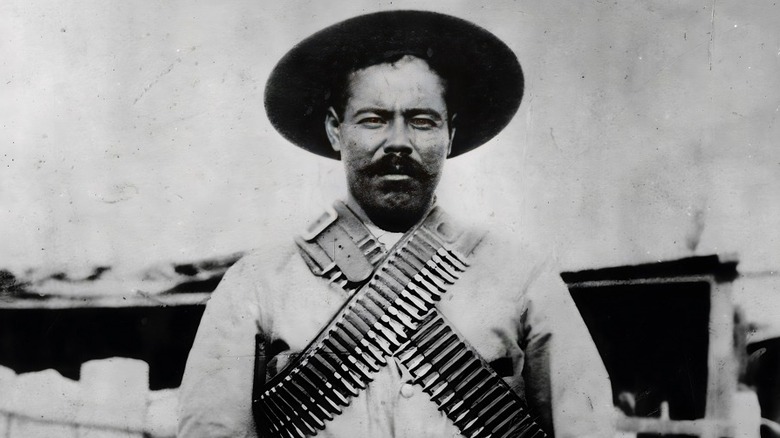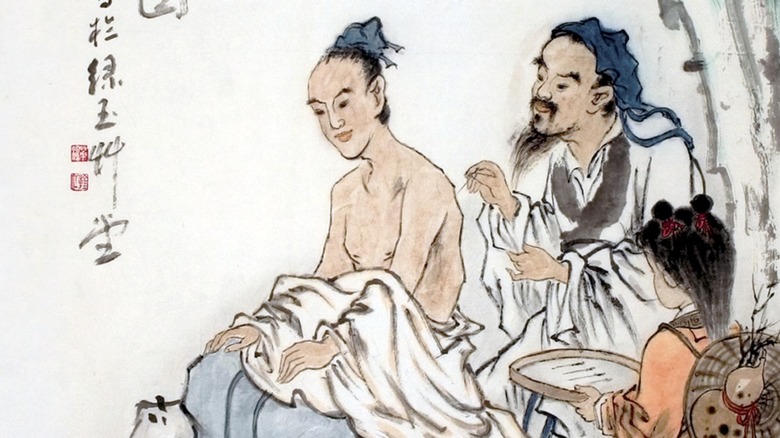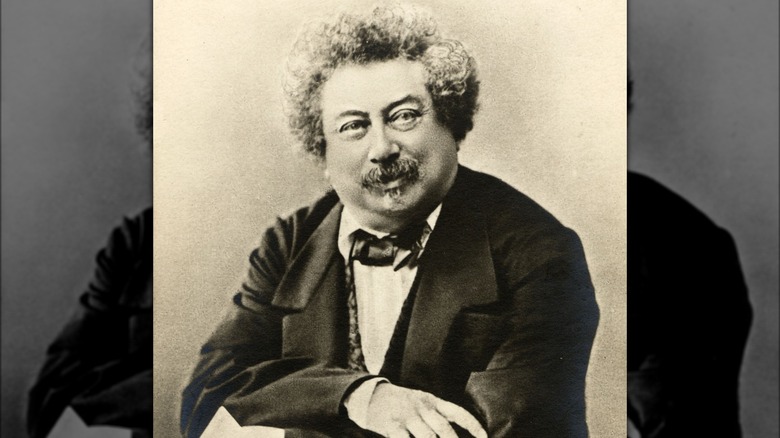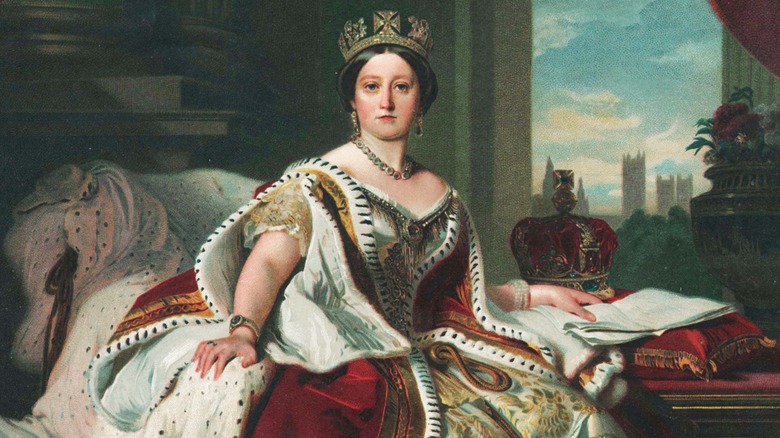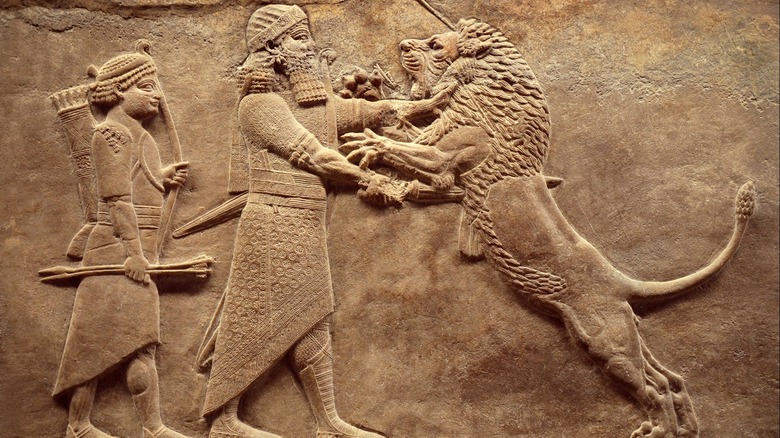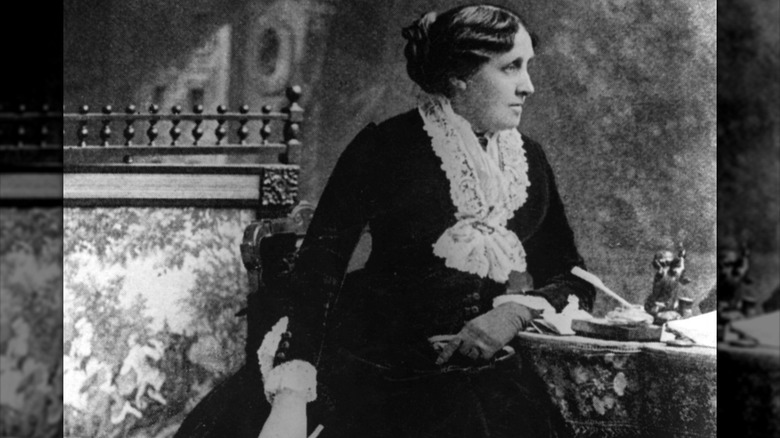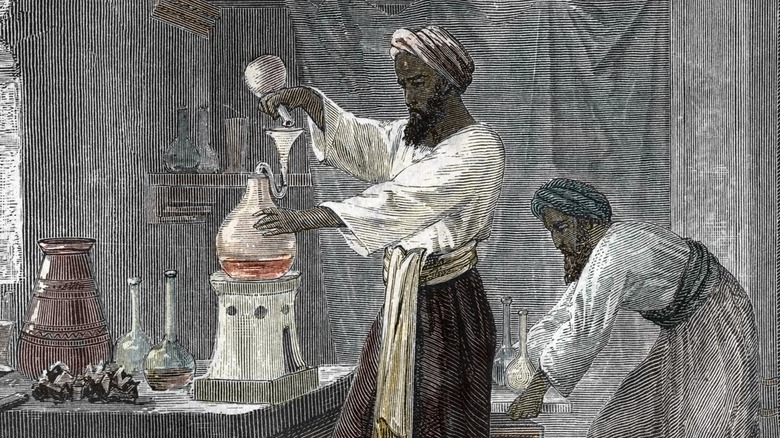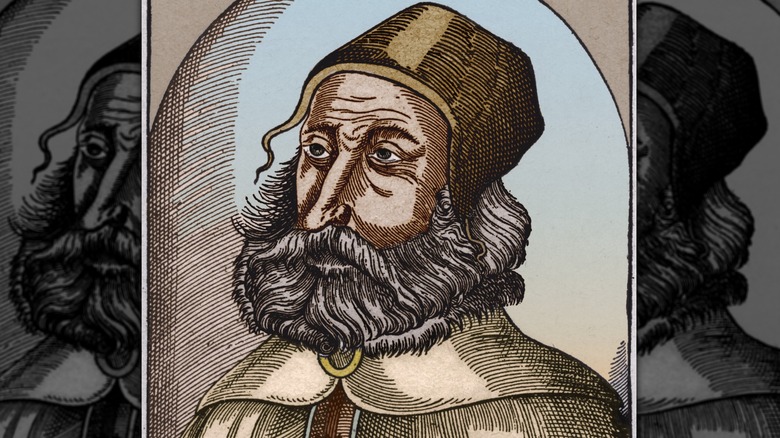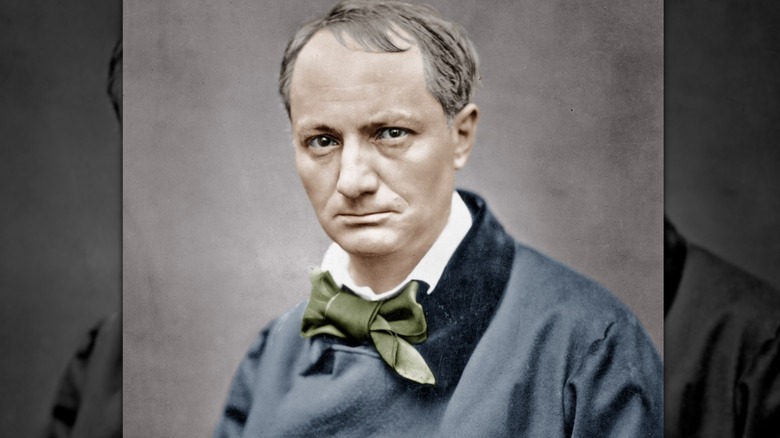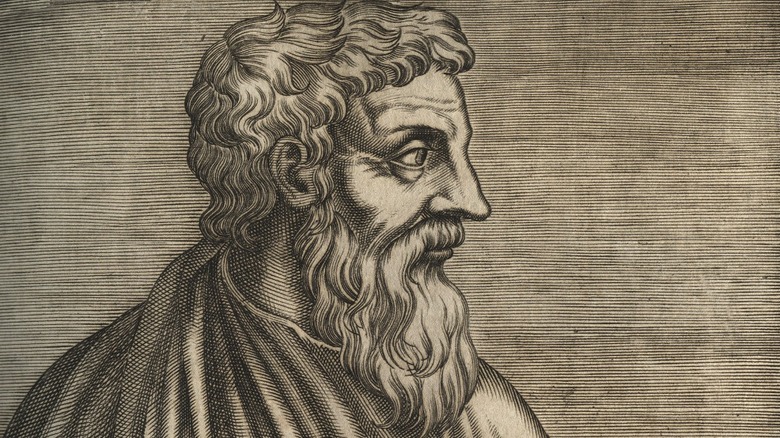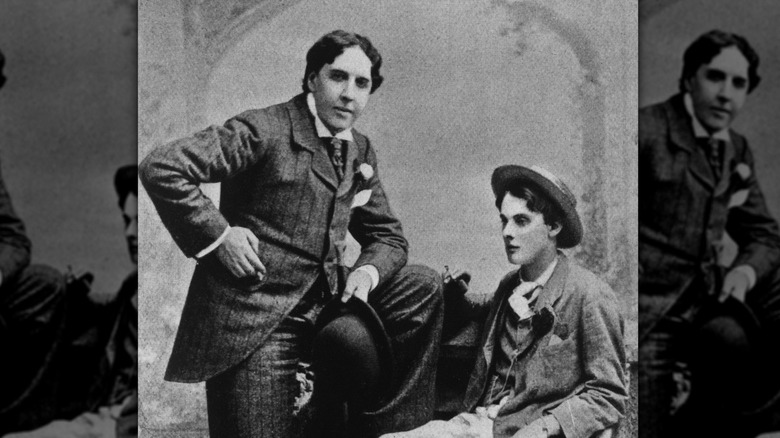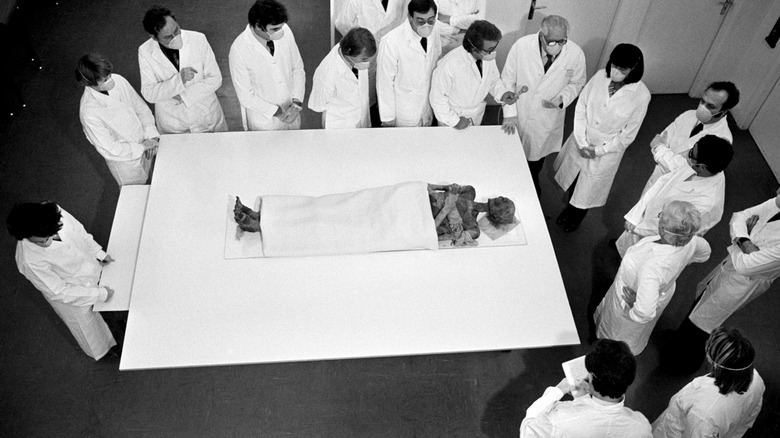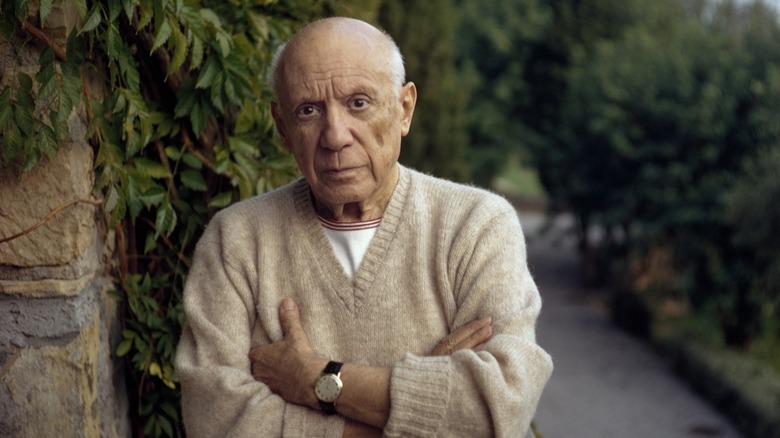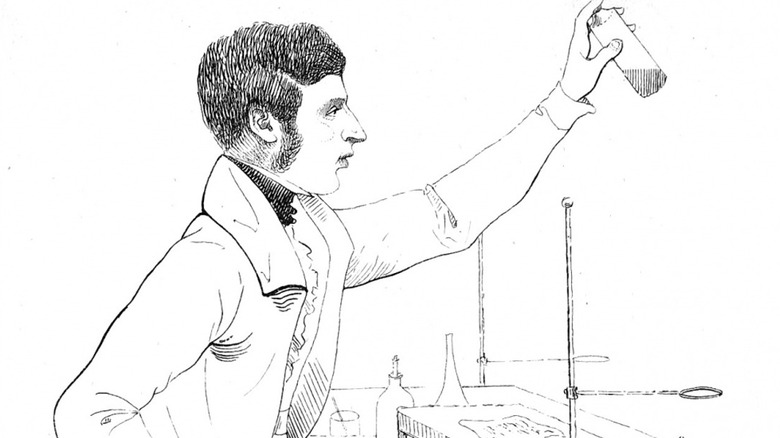Historical Figures Who May Have Used Marijuana
Nowadays, for the most part, it's no longer taboo for a celebrity or famous person to admit to using marijuana. America in particular has come a long way since the now laughable "Reefer Madness" era of the 1930s, when its use was comically demonized through sensationalized propaganda films. Not only is its medicinal value well documented within the medical community, but many places have now fully legalized its adult recreational use. While obviously not everyone is on board with the current liberalization of marijuana and cannabis laws, overall, the public seems to be trending in that direction.
As you might expect, the use of marijuana among celebrities and important historical figures is far from a new phenomenon. While today, some of the biggest rock stars and Hollywood icons admit to using marijuana, in years prior, there were also many literary giants, great physicians, philosophers, and revolutionaries who partook of the herb. In addition, there may even be evidence of its use amongst some of the most powerful people in the history of the world, including famous kings and even Egyptian pharaohs.
While definitive proof is pretty hard to come by for many historical figures associated with marijuana, their mention or even fascination with it in their studies or work can offer some clues. Going back thousands of years, these are some of the historical figures you probably wouldn't have guessed may have been using marijuana.
Pliny the Elder
While we probably wouldn't take his medical advice today, in the first century, Pliny the Elder was one of the Roman community's top scientific and medical voices. Pliny was a savant whose discoveries and writings would influence scientists for generations, and his most well-known work was undoubtedly the wondrous 37-book "Natural History," which deals with the world's physical, geological, zoological, botanical, and medicinal history.
In particular, books 10 to 32 detail Pliny's thoughts on contemporary medical literature and the medicinal use of drugs, and it's here that we find references to cannabis and marijuana. He talks about the plant in numerous places, including referring to a type of cannabis drink or tea that is helpful for things like pain reduction and gout. In book 24, chapter 102, Pliny refers to the "gelotophyllis" plant that, when mixed with myrrh and wine, causes laughter and visions.
The translation for "gelotophyllis" is "laughing leaves," and is thought by some to mean hashish – a form of marijuana derived from the plant's resin. Pliny's use of "gelotophyllis" was a little different than the medical marijuana of today, though it does seem to have produced similar effects on patients.
William Shakespeare
Among literaries and poets, few have the esteem and prestige of Englishman William Shakespeare. Even today, more than 400 years after his death, academics and fans alike still hail him as potentially the greatest playwright of all time. Yet, when people talk about Shakespeare, his potential connection with cannabis is not a commonly raised topic.
To be fair, there wasn't really any evidence that he had used marijuana, outside of his colorful imagination, until early in 2001. It was first then that researchers first published evidence in the South African Journal of Science that indicated he may have been a potential pot smoker back in the day. The researchers tested 24 different pipes found at various locations where Shakespeare lived, and they showed some surprising results. According to their research, ⅓ of the pipes they tested had residue indicative of potential combustion involving the cannabis plant. In addition to marijuana, researchers also found potential evidence of both myristic acid and cocaine, as well as tobacco.
To be clear, no proof directly attaches Shakespeare to the pipes through DNA or fingerprinting. However, pipes that showed possible cannabis smoking were found in several different locations , indicating it may have been done at least one of his residences. We'll probably never know if it was Shakespeare himself blazing up, but it's an intriguing thought.
Avicenna
Long before medical marijuana dispensaries dotted the landscapes of major cities like Denver and Los Angeles, some physicians in the medieval Islamic world were apparently also prescribing the use of cannabis to their patients. One such physician was the famous Abu Ali al-Ḥusain Ebn Abdullah Ebn Sina, more widely known as Avicenna. Avicenna lived in the 10th–11th centuries in modern-day Iran and Uzbekistan, and he was probably most well known for his book "Al-Qānūn fī al-ṭibb," or "The Canon of Medicine."
Though he published the text back in the 11th century, Western medical students in the 1600s were still reading its translation — which is pretty extraordinary. Of the huge list of things that Avicenna would prescribe to his patients, cannabis sativa figured into the picture for a number of different ailments. This included headaches, infections, degenerative bone disease, eye inflammation (ophthalmia), swelling (edema), and gout. Avicenna used cannabis for its anti-inflammatory properties, and would administer it locally to his patients.
Today, doctors recommend the use of medical marijuana for a pretty wide variety of ailments, but not for things like degenerative bone disease. However, a 2004 study in Naunyn-Schmiedeberg's Archives of Pharmacology did find it useful for helping combat edema, so maybe Avicenna was onto something with his medieval cannabis research after all.
Pancho Villa
Known as one of the most famous (or infamous) figures of the Mexican Revolution, Pancho Villa (above right) led a very interesting life. Born in 1878, Villa joined the revolution in 1910 and began fighting against the corrupt and powerful Mexican government, led by Porfirio Diaz. By 1914, he was already a fugitive, but he had an army 5,000 strong with him by his side. Following the Second Battle at Torreon in March, where they defeated the Mexican government, Villa's exploits with marijuana were lionized in a song by the name of "La Cucaracha."
The chorus of "La Cucaracha" is translated as "The cockroach, the cockroach, Can no longer walk; Because he hasn't, because he hasn't, Marijuana to smoke" (via High Times). Villa is the cockroach, but not in a negative way, needing marijuana so he can fight while under the influence, which was supposedly something he and his army did with frightening regularity. In addition to Spaniards and Mexicans, there were also many Yanqui Natives who were a part of Villa's army, too. Many of the Yanquis are said to have smoked marijuana before going into battle, using its psychoactive properties to make them formidable and dangerous.
Villa's other troops may have also smoked too, in addition to drinking psychedelic whiskey and mezcal. It's somewhat terrifying to think of a THC-backed army running wild, but luckily, Villa hasn't roamed the border towns of northern Mexico and southern Texas for over a century.
Hua Tuo
His name isn't very well known today, especially in the West, but Hua Tuo was once an incredibly important physician and surgeon, who lived in Ancient China in the second and third centuries. While it might be unlikely to think of our ancient ancestors doing complex medical procedures like surgery, the first surgical procedures actually date back as far as 8,500 years ago. It probably wasn't exactly common or well-understood — at least by modern standards — in Hua Tuo's time, but it was absolutely one of the methods he used.
Nowadays, when someone gets a serious surgery, such as one that involves the chest or stomach being cut open, they are often put to sleep under a powerful anesthetic. However, back in Hua Tuo's day, the process was a little more difficult, and his preparation involved an anesthetic he referred to as "mafeisan." Today, we don't know exactly what Hua Tuo put in his mafeisan cocktail, but some sources speculate it could have been a combination of cannabis resin and wine, or cannabis and the datura plant (per Dr. Subhuti Dharmananda, via The Institute of Alternative Medicine).
Alexandre Dumas
Widely known as the author of "The Count of Monte Cristo" and "The Three Musketeers," Alexandre Dumas, père, was also quite the marijuana connoisseur back in his heyday. The French author lived from 1802–1870, was a prominent force in the French Romantic literary movement, and is the father of Alexandre Dumas, fils, who would go on to have his own successful career as a writer.
As it turns out, from 1844–1849, Dumas, pere, was part of the mysterious French Club des Hachichins, or the "Hashish Club." Dumas was far from alone, as other great French writers of the day, like Victor Hugo, Charles Baudelaire, and Theophile Gautier, also joined him as part of the group. They smoked in a place known as the Hotel Lauzun or Pimodan House, which was located on the left bank of the Seine River and had gothic features like gargoyles. While at the house, they would dress in Arab garb and drink coffee infused with hashish they called dawamesk.
The leader of the group, Dr. Jacques-Joseph Moreau, had been smoking hash since the 1830s, when he visited the Middle East, and brought the drug back home with him to France. Though Dumas never wrote about his personal experiences with hashish, his book "The Count of Monte Cristo" seems to mention the use of dawamesk during the scene with Sinbad the Sailor, and he published it just as he entered the hash club, coincidentally or not.
Queen Victoria
Few women in history are as famous and well-known as Queen Victoria, who is illustrious enough to have an entire era named after her. Yet, while the Victorian Era is known for being a prudish society obsessed with modesty, marijuana use may have been an important part of the Queen's life. There is no direct evidence that Victoria ever actually smoked pot, though there is a ton of circumstantial evidence that leaves the possibility very open.
Much of the speculation comes from a letter that her physician, J. Russell Reynolds, wrote in 1890. The article, published in the Lancet, was titled "Therapeutical Uses and Toxic Effects of Cannabis Indica," and suggested the use of marijuana, referred to as Indian Hemp, for all kinds of things. These included neuralgia, senile insomnia, and even muscular spasms like epilepsy. Throughout the article, Russell is incredibly animated and spirited about the positive effects of marijuana, making it clear he thinks Indian hemp is a very viable medicine.
Though he never mentioned Victoria in the article, people started to assume that as his patient, she may have been prescribed Indian Hemp for menstruation during her life. Several other textbooks of the era also mentioned the use of marijuana by other doctors, and there was even an Indian Hemp Drugs Commission in the 1890s that recommended it for menstrual pain. We may never know for sure if Victoria used it, but it was definitely a hit with her physician.
King Ashurbanipal
While he may not be the most popular person among school-aged children, the seventh-century Neo-Assyrian King Ashurbanipal was a very important historical figure. Ashurbanipal was the head of one of the biggest empires in history, and at the time was the most dominant figure in all of the Middle East. He was known for many things, including a penchant for hunting lions, but one of the coolest was creating the first real library in Western history.
Hunting lions might sound a bit edgier to modern minds than opening a library, but you haven't heard what was in the library. The library housed some of the oldest scripts in the world on cuneiform tablets, including the "Flood" tablet, which has part of the "Epic of Gilgamesh," and several tablets that discussed medical science. As it turns out, some of those medical tablets referenced cannabis.
The library was destroyed shortly after the king's death, so the tablets were likely there during his reign and lifetime. The tablets point to both medical and otherworldly uses of cannabis, making one wonder just how strong the cannabis was they were working with. We know that Ashurbanipal was a man of luxury, so he may very well have been trying the latest and greatest in the ways of medicines and magical potions.
Louisa May Alcott
Even today, writing a play that largely revolves around the use of hashish would be pretty bold, which is what makes Louisa May Alcott's 1869 play "Perilous Play" such an audacious decision. Published just a few years after the Civil War, the play deals with a group of friends who take hashish bonbons together and have a vivid experience. It has both dark moments of terror and near assault, and ends with one of the main characters saying, "Heaven bless hashish." Not exactly your typical 19th-century love story.
Somewhat unsurprisingly, the author of the play, Louisa May Alcott, was known to use hashish in her personal life. Alcott was a nursing veteran of the Civil War, and afterward began medicinally using hashish. Additionally, "Perilous Play" wasn't the only story she wrote that referenced cannabis. Another one from 1877, "A Modern Mephistopheles," also sees the main characters eating edibles infused with hashish, and she even references her own personal use through her writing in the story. Alcott was more of a hash smoker than being into edibles, it seems like, and she also drank beer and used opium.
At the time, all of her drug use was completely legal, and her use of substances was far from unique among those who had experienced the Civil War. Besides the above plays, Alcott is most widely celebrated for her 1868 book "Little Women," and its 1870 sequel "Little Men," but cannabis doesn't feature in either of them.
Al-Razi
Of all the uses of medical cannabis that are recognized by doctors today, it's pretty unlikely you'll find many who recommend it to help ease symptoms of passing gas. Yet, if you had been alive during the ninth to 10th centuries, and were living near Rayy in what was then called Persia, you may have had access to the famous physician Al-Razi. In which case, you would have been in perfect luck.
Al-Razi is reported to have been a fan of cannabis even back then, and used it for multiple different illnesses. These included helping with flatulence and epilepsy, as well as for dandruff and earaches. Interestingly, Al-Razi also suggested that when taking cannabis seeds or hashish orally, that it was important to drink fresh water and eat acidic fruits to avoid having a bad reaction. During his time, Al-Razi was the chief physician at the hospital in Rayy.
He was also an alchemist, and his medical knowledge was potentially influenced by earlier Greek physicians like Claudius Galen and Pedanius Dioscorides, who had also experimented with medical cannabis centuries prior. Al-Razi was not just a practitioner of medicine, but he was also an intellectual who studied other cultures' forms of medicine, like Greek and Syrian. And throughout his extensive studies, Al-Razi continually recommended marijuana.
Claudius Galen of Pergamum
The impression one might get after reading the works of Claudius Galen of Pergamum, a second to third-century Greco-Roman physician and philosopher, is that the ancient Romans were big fans of pot. One of his most famous works was "De alimentorum facultatibus," which contained references to marijuana. Galen apparently suggested toasting the marijuana and eating it to enhance certain meals.
These may have been referring to marijuana-infused cakes that he and his compatriots would consume for dessert, and it was supposedly a widespread delicacy around ancient Italy. In addition to consuming cannabis recreationally, Galen also saw medicinal potential in the plant. He considered its use for earaches, as well as inflammation, upset stomach, gout, and muscle soreness. Importantly, Galen was cautious not to overuse marijuana, suggesting that too much could make you impotent or result in a headache.
Galen was a very influential physician for his time, and his impact was being felt well over 1,000 years later by physicians and learned people. He also influenced later Arabic and Muslim scholars, potentially including figures like Al-Razi, Rumphius, and al-Badri, who later experimented with medical cannabis themselves.
Charles Baudelaire
When Theophile Gautier and Dr. Jacques-Joseph Moreau created the Club des Hachichins, or "Hashish Club," in the 1840s, they invited many leading literaries of the day. In addition to the influential Alexandre Dumas, Gautier and Moreau also brought along Charles Baudelaire, another very famous French poet. Ironically, even though Baudelaire may have written most prominently about the use of hashish and was known to occasionally indulge, he was not a frequent user.
Baudelaire was a member of the hash club as an observer rather than a user of hashish, but was known to have tried it at least a few times, and he may have previously used it frequently when he contracted an STD as a young law student. However, by middle age, he reportedly found hashish to be socially isolating and negatively compared it to wine, which he had a higher affinity for. Nonetheless, Baudelaire wrote the book "Les Paradis Artificiels" or "Artificial Paradise," which contained the notable section "The Poem of Hashish."
In the poem, Baudelaire describes how some people feel under the influence — both the negatives and positives — and he also gives a brief history of hashish, as well as its uses by various historical cultures throughout the world. Even though he may not have been a heavy user of cannabis, Baudelaire provided some valuable and interesting insight into its use during the 19th century.
Pedanius Dioscorides
Pedanius Dioscorides was an ancient Greco-Roman physician and pharmacologist, who refers to cannabis as a cure for several different ailments. Born in the year A.D. 40, and passing away at the age of just 50, Dioscorides wrote about hundreds of medicinal plants, including the cannabis plant. His contemporaries included Pliny the Elder — another proponent of the medicinal use of cannabis. Dioscorides' seminal work is known as "De Materia Medica," which translates to "On Medical Matters," and that's where his references to marijuana are largely contained.
Dioscorides suggested the use of cannabis for inflammation, earaches, and — even more dubiously — as a form of birth control. For inflammation, Dioscorides suggested taking the root of the cannabis plant and boiling it in water to form a curative medicinal concoction. All the same, considering the massive amount of plants that Dioscorides talks about, cannabis doesn't seem to be too high on his list.
Oscar Wilde
Oscar Wilde was a 19th century poet and novelist originally from Ireland. A highly educated man who went to several prestigious colleges in the United Kingdom, his poems were very well received within the Aestheticism movement that was burgeoning by the late 1800s. He even toured both the United States and Canada due to his success, though not everyone was a fan of his work and idiosyncratic dress. Tragically, Wilde would later be imprisoned due to his homosexuality, which also occurred around the time that he was known to use hashish.
According to a letter (via "The Complete Letters of Oscar Wilde") Wilde sent his friend Robert Ross from the Hotel de l'Europe in Algiers, in late January 1895, Wilde and his companion Lord Alfred "Bosie" Douglas (pictured above together) were engaged in copious hashish smoking while on vacation. He went on about how much he enjoyed smoking, writing: "quite exquisite: three puffs of smoke and then peace and love. Bosie ... cries like a child for the best haschish [sic]." They seemed to have been buying the hashish from Kabylia locals, and apparently had better luck finding it than they did a tour guide.
Ramses II
In 1881, researchers studying the mummies of the ancient Egyptians made quite the startling discovery. When they were uncovering the tomb of the 19th-dynasty Egyptian Pharaoh Ramses II, the researchers found evidence of cannabis not just within the burial site, but even with the embalmed mummy himself. In all, they found seven different grains of cannabis on Ramses II, and it was speculated the cannabis was not native to Egypt, but had traveled some distance to get there.
Ramses II is thought to have passed away in the early 13th century B.C., meaning the cannabis had been there for over 3,200 years by the time the researchers observed it — a testament to the exceptional preservational properties of the tomb's environment. Looking back, it's actually not that far-fetched that Ramses II could have been a user of marijuana. It was in use in Egypt for medical purposes as far back as the 16th century B.C., hundreds of years before Ramses II was even born, as recorded on the Ebers Papyrus. Sadly, there are no clues as to why the marijuana was found inside Ramses II tomb or whether he used the plant for its medicinal or psychoactive purposes.
Pablo Picasso
Pablo Picasso is widely regarded as one of the most influential painters and artists of the 20th century, and he was also a brief user of hashish in the early 1900s. Picasso was born in Malaga, Spain, in 1881, and by the 1890s, he was already making a name for himself as a painting prodigy in Madrid. At the turn of the century, Picasso made his way to Paris, which was followed by his Blue, Rose, and Analytical Cubism periods. It was during the latter that he is said to have used hashish.
In Patrick O'Brian's "Picasso: A Biography," he claims that Picasso would ingest hashish pills with several friends, though it was largely experimentation on Picasso's part. Unfortunately for Picasso, it seems as though his experience with the hashish pills was overall negative, and he did not want to keep using them. In addition, he found that one of his friends had died by suicide, potentially as a result of mixing the hashish pills and other drugs together, which really turned him off to the idea of further use.
Following his brief flirtation with cannabis, Picasso went on to have his most successful period, including his major contributions to the Surrealist movement and sculpting industry.
If you or someone you know is struggling or in crisis, help is available. Call or text 988 or chat 988lifeline.org
Sir William Brooke O'Shaughnessy
Though most people likely have never heard his name, anyone in favor of the use of medical cannabis ought to be familiar with Sir William Brooke O'Shaughnessy. O'Shaughnessy was an Irish doctor and surgeon who began testing the use of cannabis as early as 1838, on sailors employed by the East India Company. By 1839, he was ready to present his findings, and his paper "On the Preparations of Indian Hemp, or Gunjah (Cannabis Indica)..." , published in The British and Foreign Medical Review, immediately made waves, and by 1900 had spurned at least 100 other publications also alluding to the use of medicinal marijuana.
In the paper, O'Shaughnessy somewhat erroneously claimed that its use in western Europe for medicinal purposes was unknown, but pointed to its widespread use in Arabia and Persia. He remarked on several different methods for ingesting the cannabis, including mixing it with water to drink, smoking, and even creating tinctures with resin. He suggested their potential application for fighting cholera, and thought it might even work for tetanus, too.
O'Shaughnessy's work, while primitive, laid the foundation for the future of medical marijuana study in the West. He was one of the few doctors of his time to be experimenting with cannabis as a medicine, and without O'Shaughnessy, the state of medicinal cannabis in the West may have taken a different direction.
